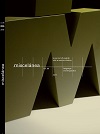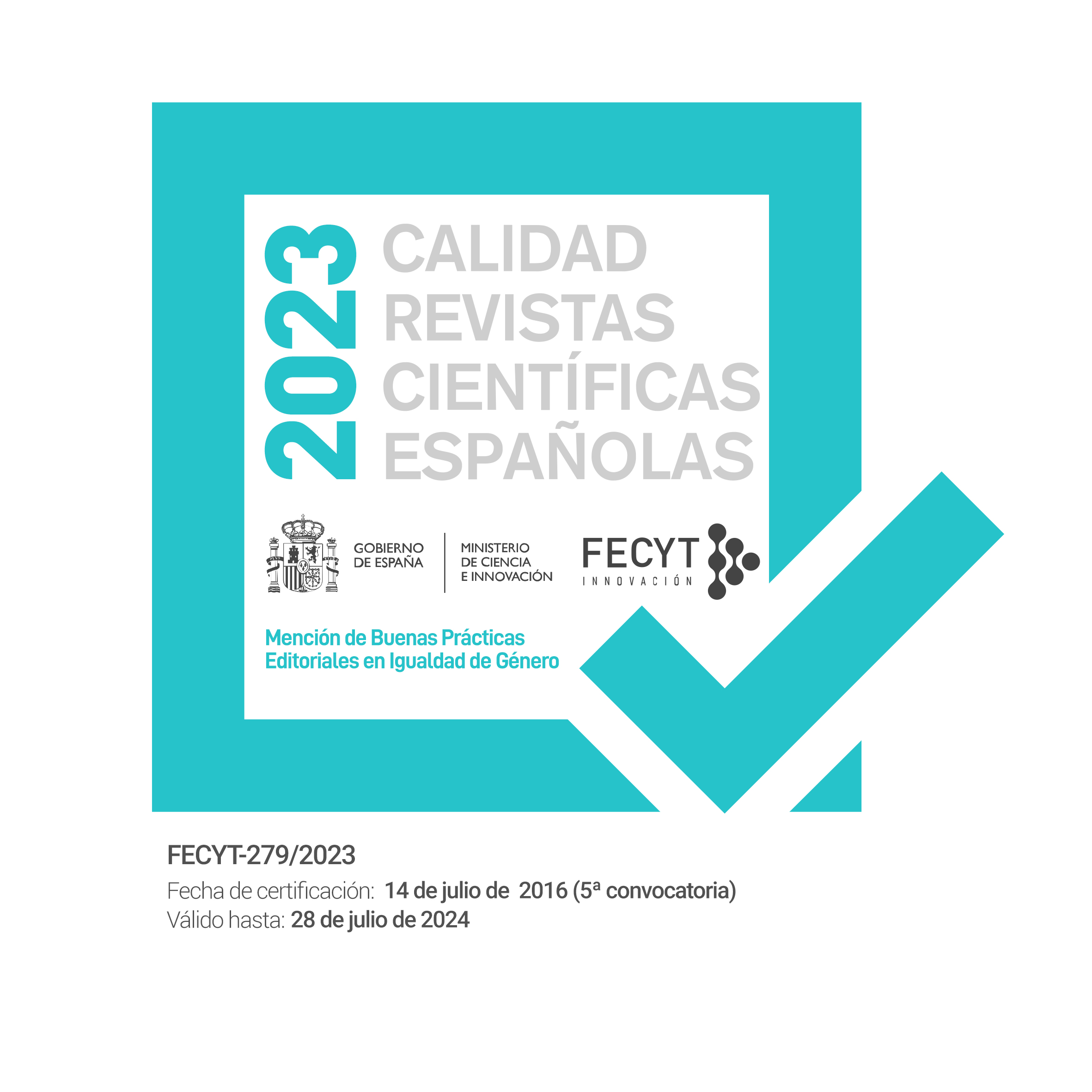Exemplification then and now: A historical overview of English exemplifying markers
DOI:
https://doi.org/10.26754/ojs_misc/mj.20176816Keywords:
exemplification, exemplifying markers, co-occurrence of markers , obsolete forms, emerging formsAbstract
Examples are discursive instruments intended to represent the more general unit to which they belong. A prototypical exemplifying construction has a twofold structure consisting of a general element (GE; the first unit, with a more general referent) and an exemplifying element (EE; the second, more specific unit whose referent is included within the referent of the GE; these are the ‘cases in point’). The use of an explicit link to indicate partial coreferentiality within these two units is compulsory. This paper focuses on those linking words/phrases which are used in English to convey such a relation, the so-called exemplifying markers (EMs). For a better understanding of these forms, a classification of such markers is proposed on the basis of semantic-pragmatic and syntactic criteria. With the aim of providing a more comprehensive approach to English EMs, some forms which were used in earlier stages of the language with an exemplifying function but which have now become obsolete are also discussed. Finally, the paper also draws attention to some forms which are not classified as EMs but which are on occasion found performing an exemplifying function.
Downloads
References
Barber, Charles. 1976. Early Modern English. Edinburgh: Edinburgh U.P.
Baugh, Albert Croll and Thomas Cable. (1951) 1993. A History of the English Language. London: Routledge.
Bernstein, Theodore Menline. 1971. Miss Thistlebottom’s Hobgoblins. The Careful Writer’s Guide to the Taboos, Bugbears, and Outmoded Rules of English Usage. New York: Farrar, Straus, and Giroux.
Biber, Douglas, Stig Johansson, Geoffrey Leech, Susan Conrad and Edward Finegan. 1999. Longman Grammar of Spoken and Written English. Essex: Longman.
Brosius, Hans Bernd and Anke Bathelt. 1994. “The Utility of Exemplars in Persuasive Communications”. Communication Research 21: 48-78.
Burchfield, Robert William. (1926) 1998. The New Fowler’s Modern English Usage. Oxford: Oxford U.P.
Carter, Ronald, Michael McCarthy, Geraldine Mark and Anne O’Keeffe. 2011. English Grammar Today. Cambridge: Cambridge U.P.
Dailey-O’Cain, Jennifer. 2000. “The Sociolinguistic Distribution of and Attitudes toward Focuser like and Quotative like”. Journal of Sociolinguistics 4 (1): 60-80.
D’Arcy, Alexandra. 2006. “Lexical Replacement and the Like(s)”. American Speech 81: 339-357.
D’Arcy, Alexandra. 2007. “Like and Language Ideology: Disentangling Fact from Fiction”. American Speech 82: 386-419.
Fernández-Bernárdez, Cristina. 1994-1995. “Marcadores textuales de ‘ejemplificación’ textual”. Estudios de Lingüística 10: 103-144.
Follett, Wilson. 1966. Modern American Usage. A Guide. New York: Hill and Wang.
Fowler, Henry Watson. 1926. A Dictionary of Modern English Usage. Oxford: Clarendon Press.
Freeman, Morton S. 1990. The Wordwatcher’s Guide to Good Writing and Grammar. Ohio: Writer’s Digest Books.
Fry, Edward Bernard, Jacqueline E. Kress and Dona Lee Fountoukidis. (1984) 2006. The Reading Teacher’s Book of Lists. New Jersey: Prentice Hall.
Gatto, Maristella. 2014. The Web as a Corpus. Theory and Practice. London/New York: Bloomsbury.
Gibson, Rhonda and Dolf Zillmann. 1994. “Exaggerated versus Representative Exemplification in News Reports: Perception of Issues and Personal Consequences”. Communication Research 21: 603-624.
GloWbE: Corpus of Global Web-Based English. <http://corpus.byu.edu/glowbe/>. Accessed March 30, 2017.
Hoffmann, Sebastian. 2004. “Using the OED Quotations Database as a Corpus: A Linguistic Appraisal”. ICAME Journal 28: 17-30.
Hundt, Marianne, Nadja NesselhAuf and Carolin Biewer (eds.) 2007. Corpus Linguistics and the Web. Amsterdam/New York: Rodopi.
Hyland, Ken. 2007. “Applying a Gloss: Exemplifying and Reformulating in Academia Discourse”. Applied Linguistics 28 (2): 266-285.
Iyeiri, Yoko, Michiko Yaguchi and Hiroko Okabe. 2005. “Gender and Style: The Discourse Particle like in the Corpus of Spoken Professional American English”. English Corpus Studies 12: 37-51.
Kilpatrick, James Jackson. 1984. The Writer’s Art. Missouri: Andrews McMeel Publishing LLC.
Lischinsky, Alon.2008.“Examples as Persuasive Argument in Popular Management Literature”. Discourse and Communication 2: 243-269.
López-Couso, María José. 2016. “Continuing the Dialogue between Corpus Linguistics and Grammaticalisation Theory: Three Case Studies”. Corpus Linguistics and Linguistic Theory 12: 7-29.
López-Couso, María José and Belén Méndez-Naya. 2012. “On the Use of as if, as though and like in Present-day English Complementation Structures”. Journal of English Linguistics 40 (2): 172-195.
López-Couso, María José and Belén Méndez-Naya. 2014. “From Clause to Pragmatic Marker: A Study of the Development of Like-parentheticals in American English”. Journal of Historical Pragmatics 15 (1): 66-91.
MED: Middle English Dictionary. <http://quod.lib.umich.edu/m/med/>. Accessed March 30, 2017.
Meehan, Teresa. 1991. “It’s like, ‘What’s Happening in the Evolution of like?’: A Theory of Grammaticalization”. Kansas Working Papers in Linguistics 16: 37-51.
Meyer, Charles. F. 1992. Apposition in Contemporary English. Cambridge: Cambridge U.P.
Miura, Ayumi. 2013. “Namely and Other Particularisers in Chaucer’s English”. In Nakao, Yoshiyuki and Yoko Iyeiri (eds.) Chaucer’s Language: Cognitive Perspectives. Osaka: Osaka Books: 99-124.
Nevalainen, Terttu. 1999. “Early Modern English Lexis and Semantics”. In Lass, Roger (ed.) The Cambridge History of the English Language, Vol. III: 1476-1776. Cambridge: Cambridge University Press: 332-458.
OED: Oxford English Dictionary. . Accessed March 30, 2017.
Oxford Dictionaries Pro. <http://english.oxforddictionaries.com/>. Accessed March 30, 2017.
Pahta, Päivi and Saara Nevanlinna. 2001. “On Markers of Expository Apposition”. NOWELE 39: 3-51.
Paquot, Magali. 2007. “Towards a Productively-oriented Academic Word List”. In Waliński, Jacek, Krzysztof Kredens and Stanisław Goźdź-Roszkowski (eds.) Lodz Studies in Language Vol. 13: Corpora and ICT in Language Studies. PALC 2005. Frankfurt am Main: Peter Lang: 127-140.
Partington, Alan. 2015. “Evaluative prosody”. In Aijmer, Karin and Christoph Rühlemann (eds.) Corpus Pragmatics. A Handbook. Cambridge: Cambridge U.P.: 279-303.
Perry, Stephen D. and William J. Gonzenbach. 1997. “Effects of News Exemplification Extended: Considerations of Controversiality and Perceived Future Opinion”. Journal of Broadcasting and Electronic Media 41 (2): 229-244.
Peters, Pam. 2004. The Cambridge Guide to English Usage. Cambridge: Cambridge U.P.
Quirk, Randolph, Sidney Greenbaum, Geoffrey Leech and Jan Svartvik. 1985. A Comprehensive Grammar of the English Language. London: Longman.
Rodríguez-Abruñeiras, Paula. 2017. “A formal and functional approach to exemplifying markers in recent and present-day British and American English”. Manuscript submitted for publication.
Romaine, Suzanne and Deborah Lange. 1991. “The Use of like as a Marker of Reported Speech and Thought: A Case of Grammaticalization in Progress”. American Speech 66 (3): 227-279.
The Cambridge Advanced Learner’s Dictionary. (2003) 2008. Cambridge: Cambridge U.P.
The Chicago Manual of Style. (1906) 1982. Chicago and London: The University of Chicago Press.
The Longman Dictionary of Contemporary English. (1978) 2009. Pearson Longman.
Zillmann, Dolf and Hans-Bernd Brosius. 2000. Exemplification in Communication. The Influence of Case Reports on the Perception of Issues. NewYork/London: Routledge.
Downloads
Published
How to Cite
Issue
Section
License
Copyright (c) 2017 Miscelánea: A Journal of English and American Studies

This work is licensed under a Creative Commons Attribution-NonCommercial 4.0 International License.


